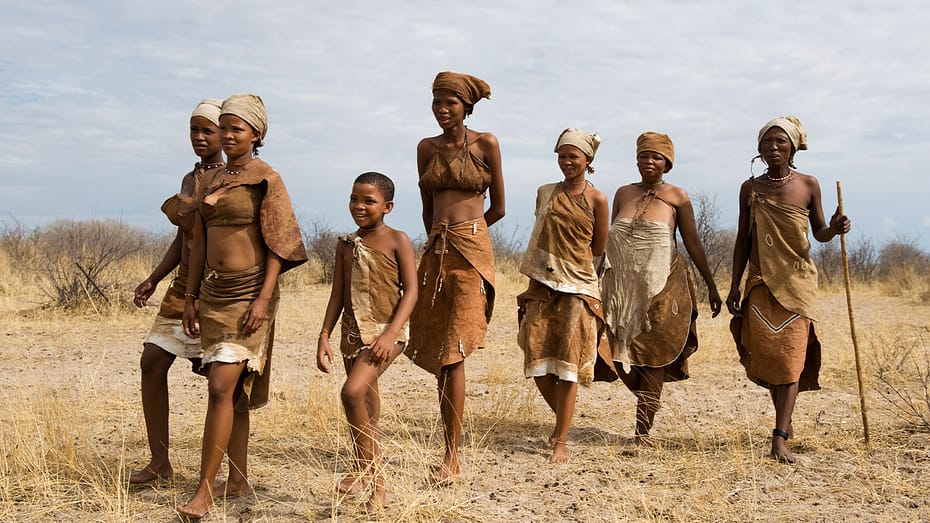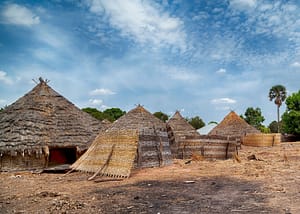Linking Human Rights Movements to Community Conservation
By Resource Africa
In this third article based on the recent Community Conservation Horizon Scan, we
look at how rural communities can use the growing recognition of the rights of
Indigenous peoples and local communities to promote their role in environmental
conservation. The concept of Community-Based Natural Resource Management (CBNRM) as
practised in Southern Africa is thoroughly grounded in the recognition of rights to
resources. CBNRM programmes have developed in a post-colonial context where
independent governments are implementing policies designed to address injustices
perpetrated by past colonial regimes. Granting user rights over plants and animals to
rural communities – thus repealing colonial laws that forbid people from using these
resources – lies at the heart of any CBNRM policy.While CBNRM was developing in Southern Africa, the movement around Indigenous
peoples rights was gaining momentum across the globe. By 2000, the United Nations
established a Permanent Forum for Indigenous Issues (UNPFII) to raise matters
related to the rights of Indigenous peoples at the UN level. In 2007, the UN General
Assembly adopted the UN Declaration on the Rights of Indigenous Peoples
(UNDRIP). The recognition of rights in UNDRIP includes the sustainable use of
natural resources, and thus fits well with the existing CBNRM concept. The communities engaged in CBNRM are not necessarily defined as “Indigenous” in
the sense of the term used by the UN, whilst others that would be considered
Indigenous are not recognised as such by their national governments. Since many
rural communities have lived on the land they now occupy for several generations and
have cultural practices associated with the land, their rights must also be considered.
The term “local communities” generally refers to such people groups, some of which
include different tribes living together as one self-defined community.The UN Declaration on the Rights of Peasants and Other Peoples Working in Rural
Areas (UNDROP) fills a similar role for local communities as the UNDRIP does for
Indigenous peoples. Again, the rights to natural resources are included in this
declaration, thus supporting CBNRM. In Southern Africa, CBNRM involves both Indigenous peoples and local communities
(collectively, IPLCs) and there is good reason to include both groups in biodiversity
conservation. Global multilateral agreements such as the UN Convention on
Biological Diversity (CBD) and organisations such as the International Union on the
Conservation of Nature (IUCN) frequently put these two groups together in their
resolutions and agreements. Similarly, IPLCs worked together during the African
Protected Areas Congress in Kigali, Rwanda to address their governments and call for
greater recognition of their rights.
Until recently, communities engaged in CBNRM in Southern Africa have operated
without much awareness of global movements around the rights of IPLCs. Resource
Africa and our partners Community Leaders Network of Southern Africa (CLN) are
looking to change this by making the links between these movements clearer and
mutually beneficial. Reflecting on his first experience of the UNPFII earlier this year, CLN Chair Rodgers Lubilo recognised the need for his network to work more closely
with Indigenous peoples’ movements.
Advocacy for the recognition of IPLC rights can take place on national and global
platforms. At the national level, CBNRM programmes are stronger where more rights
and responsibilities are devolved to communities by national government. In
particular, the rights to benefit from high value photographic and hunting tourism
concessions should be similar to the rights to customary use of plants and other
resources (e.g. water). Another area that needs to be addressed to improve the
effectiveness of CBNRM is that of land rights, which would allow communities to
enforce their land use plans that separate wildlife areas from agricultural or settlement
areas.Communities in Southern Africa have shown that they are more than capable of
protecting high value species such as rhino, elephant and lion, provided they have the
right to generate income and create jobs from these species. Since rights and
responsibilities are linked, creating room for communities to exercise their rights over
these resources can also decrease the burden of responsibility on the government.
Rather than anti-poaching being a government-only task, community rangers can
work alongside their government counterparts in joint patrols and by sharing
intelligence on suspicious activities in their areas. At the international level, communities in Southern Africa can reach out to other
IPLCs across the continent and the world to learn from each other and undertake joint
advocacy projects. The ICCA Consortium (consisting of IPLCs that manage
Indigenous and Community Conserved Areas, also known as ‘territories of life’) has
developed a registry of community conservation areas that is recognised by the IUCN
and forms part of the Protected Planet Initiative. Registering with an international database thus increases the visibility of each
community conservation area, particularly under the Other Effective area-based
Conservation Measures (OECM) category that contributes to the global 30×30 target.
The ICCA registry also allows communities to submit case studies that provide more
details about how natural resources are conserved in their areas. Increasing awareness about community conservation efforts will attract investors and
partners that are looking for ways to contribute to global biodiversity targets within
the framework of rights-based conservation. Southern African communities can thus
broaden their horizons and pool of potential partners by linking with global
Indigenous rights movements and other communities involved in similar conservation
work worldwide.





